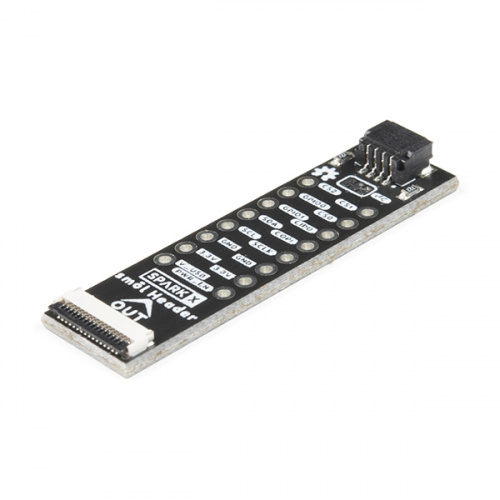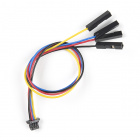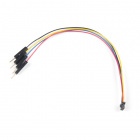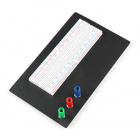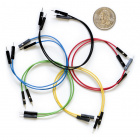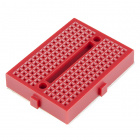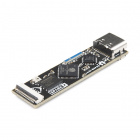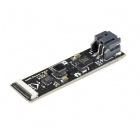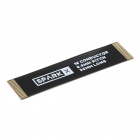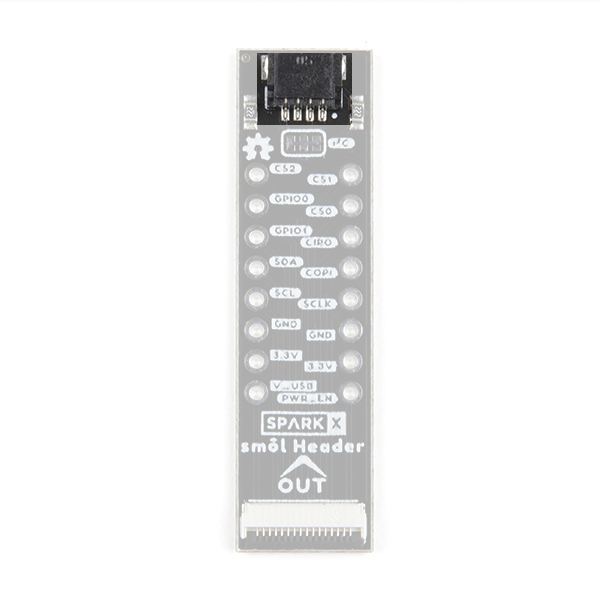smôl Header Hookup Guide
Introduction
smôl is a new board format and, as the name suggests, they're really small!
Need to do some prototyping with smôl? Or want to connect your smôl stack to a Qwiic board or your favorite SPI sensor? The smôl Header is the perfect solution!
Required Materials
If you want to connect a Qwiic board to your smôl stack, you're going to need some Qwiic cables:
If you're prototyping with smôl, you may need:
The Header is part of the smôl ecosystem. Why not pair it with one of the smôl Processor Boards?
To be able to reduce the sleep current below 10µA, you're going to want to pair the ESP32 with one of our intelligent smôl Power Boards:
Don't forget that you will need Flexible Printed Circuits to connect your smôl boards together. You're going to need one FPC per board. Our 36mm FPC is the perfect length if you want the smôl boards to stack neatly, one on top of the other.
Suggested Reading
This is the hookup guide for the smôl Header. Click the button below if you want to find out more about smôl itself.
We recommend taking a look through the following tutorials if you are not familiar with the concepts covered in them:
Serial Peripheral Interface (SPI)
Hardware Overview
smôl boards are designed to stack one on top of the other, using 16-way 0.5mm-pitch Flexible Printed Circuits (FPCs). We really like FPCs and we're using them on more and more of our products. But they can be a bit tricky when it comes to prototyping or if you want to connect other devices to your smôl stack. The smôl Header is here to help!
FPC Connections
Like all of our smôl boards, the Header is equipped with a 16-way 0.5mm-pitch Flexible Printed Circuit connector. The pin-out for the smôl Header connector is as follows:
| Connector Pin No. | Signal Name | Function |
|---|---|---|
| 1 | PROC_PWR_EN | Processor Power Enable |
| 2 | 3V3 | 3.3V Power Rail |
| 3 | GND | Power Ground / 0V |
| 4 | SCLK | SPI Clock |
| 5 | COPI | SPI Controller Out Peripheral In |
| 6 | CIPO | SPI Controller In Peripheral Out |
| 7 | CS0 | SPI Chip Select 0 |
| 8 | CS1 | SPI Chip Select 1 |
| 9 | CS2 | SPI Chip Select 2 |
| 10 | GPIO0 | General Purpose Input / Output 0 |
| 11 | GPIO1 | General Purpose Input / Output 1 |
| 12 | SDA | I2C Data |
| 13 | SCL | I2C Clock |
| 14 | GND | Power Ground / 0V |
| 15 | 3V3 | 3.3V Power Rail |
| 16 | V_USB | USB Power Rail (5V) |
Breakout Pins
You've got full access to all the smôl pins, so connecting your favorite SPI board to smôl is as easy as plug-and-play! The smôl Header breaks out all 16 smôl connections in good old 0.1" format. The hole pattern is the same as an old school 16-pin 0.3" Dual-In line Package (DIP). Perfect for soldering header pins to and then pushing into standard breadboard.
Qwiic Connector
We've included a Qwiic connector too, so you can attach your favorite Qwiic boards to your smôl stack qwiicly and easily.
Qwiic (I2C) Pull-ups
The Header also includes pull-up resistors for the I2C SDA and SCL signals. You can disconnect the resistors if required by opening the dual split-pad jumper links.
If you haven't used jumpers before, please check out our tutorial.
How to Work with Jumper Pads and PCB Traces
Troubleshooting
Resources and Going Further
For more information about the smôl Header, check out the following links:
smôl Header Documentation:
smôl Documentation:
